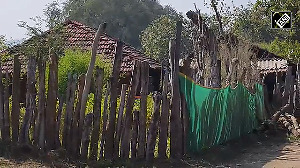While the number of crorepati households, or those households with an annual income upwards of Rs 1 crore (Rs 10 million), has grown by 26 per cent in the period since 1995-96 to almost touch 20,000 in 2001-02, this will increase even further over the next five to six years.
According to the latest household income survey from NCAER conducted by a team headed by R K Shukla, by 2005-06 the number of crorepati households will go up by more than two-and-a-half times, and by the end of the decade it will cross 1,40,000. Assuming an average family size of five, that's 700,000 high-value customers.
Take any other rich income segment, and the growth scenario looks equally attractive. In the Rs 50 lakh to Rs 1 crore (Rs 5 million to 10 million) bracket, the NCAER study, brought out in association with Business Standard, shows that the number of households is expected to increase from 40,000 in 2001-02 to over 100,000 in 2005-06 and further to 250,000 by the end of the decade.
In fact, with the upper income classes rising faster than the lower-income ones, and the lowest ones (annual household income below Rs 90,000) actually shrinking -- this group remained more or less stagnant in the 1995-96 to 2001-02 period -- India's income demographics will be unrecognisable by the end of the decade.
In 1995-96, around 80 per cent of the country's population had an annual household income below Rs 90,000 -- by the end of the decade this will fall to around 52 per cent.
The rich, those who earn over Rs 10 lakh a year, will grow from 0.2 per cent to 1.7. And the middle class will rise from 2.8 to as much as 12.8 per cent.
This is the first time NCAER has really defined the middle class as someone with an annual household income of Rs 2 lakh to Rs 10 lakh (Rs 200,000 to Rs 1 million), and this is broadly based on purchase behaviour of these households.
More important than even the growth of the middle and rich classes, perhaps, is their location. Over a third of the middle class, for instance, already lives in rural areas and another sixth is to be found in really small towns with less than 500,000 people.
In the case of crorepatis, while around 2,000 of the country total of 20,000 households are to be found in rural areas, another 3,000 are to be found in small towns. In the case of the Rs 50 lakh to Rs 1 crore bracket, 7,000 of the 40,000 total are to be found in rural areas, and another 6,000 in small towns.
Of course, from a marketer's point of view, what's more important than the number of rich is the geographic area in which they are concentrated. Clearly if the density (the number of rich per million population in a state/city) is low, the marketing effort may not be worth it.
According to the NCAER survey, states like Haryana actually have more rich people living in rural areas in comparison with urban areas -- the state has 340 urban crorepatis as compared to 482 rural ones, and 241 of the urban ones live in small towns.
It has 828 urban families in the Rs 50 lakh to Rs 1 crore bracket compared to 1,187 rural ones, and 586 of the urban ones live in small towns. In terms of density, rural Haryana has 199 crorepati families per million families (it's 280 for small town Haryana) -- how high this is can be seen from the fact that Kolkata's density of crorepatis is 180, Hyderabad's is 191 and Chennai's is 291.
While Punjab's proportion of rich in rural areas and small towns is lower than that of Haryana, its densities are roughly similar. Gujarat and Maharashtra, the survey shows, have even smaller proportion of rich in small towns and rural areas, but in these cases also, the densities are high enough to be of great interest to marketers.
Small town Gujarat, for instance, has a density of over 200 in the case of crorepatis while the figure is over 350 in the case of small-town Maharasthra.






 © 2025
© 2025